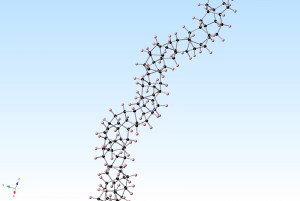
Using this National Geographic image, Dr. Chanda is able to demonstrate the color-changing abilities of the nanostructured reflective display.
Image: University of Central Florida
The development to the first colorful, flexible, skin-like display is taking wearable electronics to a whole new level.
Researchers from the University of Central Florida’s NanoScience Technology Centre have created a digital “skin” that can cloak wearers in realistic images. This new technology could be applied to concepts as simple as outfit changes, or more serious matters like replacing camouflage for members of the military.
The research was led by Professor Debashis Chanda, who took inspiration for this development from nature.
“All manmade displays – LCD, LED, CRT – are rigid, brittle and bulky. But you look at an octopus, they can create color on the skin itself covering a complex body contour, and it’s stretchable and flexible,” Chanda said. “That was the motivation: Can we take some inspiration from biology and create a skin-like display?”
This from Wired:
The result is described as an ultra-thin nanostructure, which can change color when different voltage is applied. The method uses ambient light rather than its own light source, meaning no bulky backlighting is needed, and the structure is relatively simple; a thin liquid crystal layer above and metallic “egg carton” like nanomaterial that reflects wavelengths selectively.
In the end, the researchers developed something that is 25 times thinner than human hair for easy application to fabrics and plastics.
Head over to the Digital Library to read about some of the latest research and innovations in nanomaterials.


